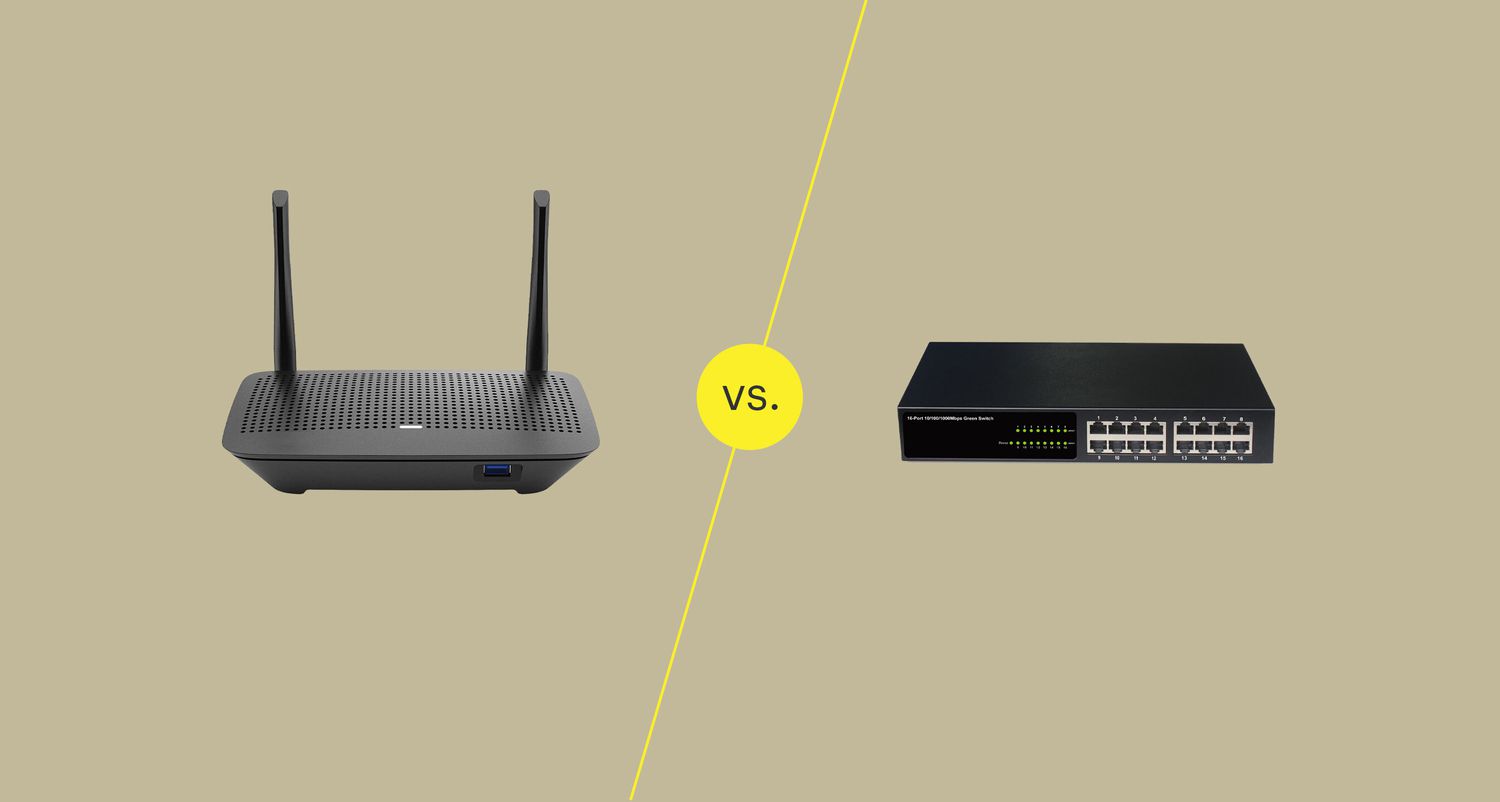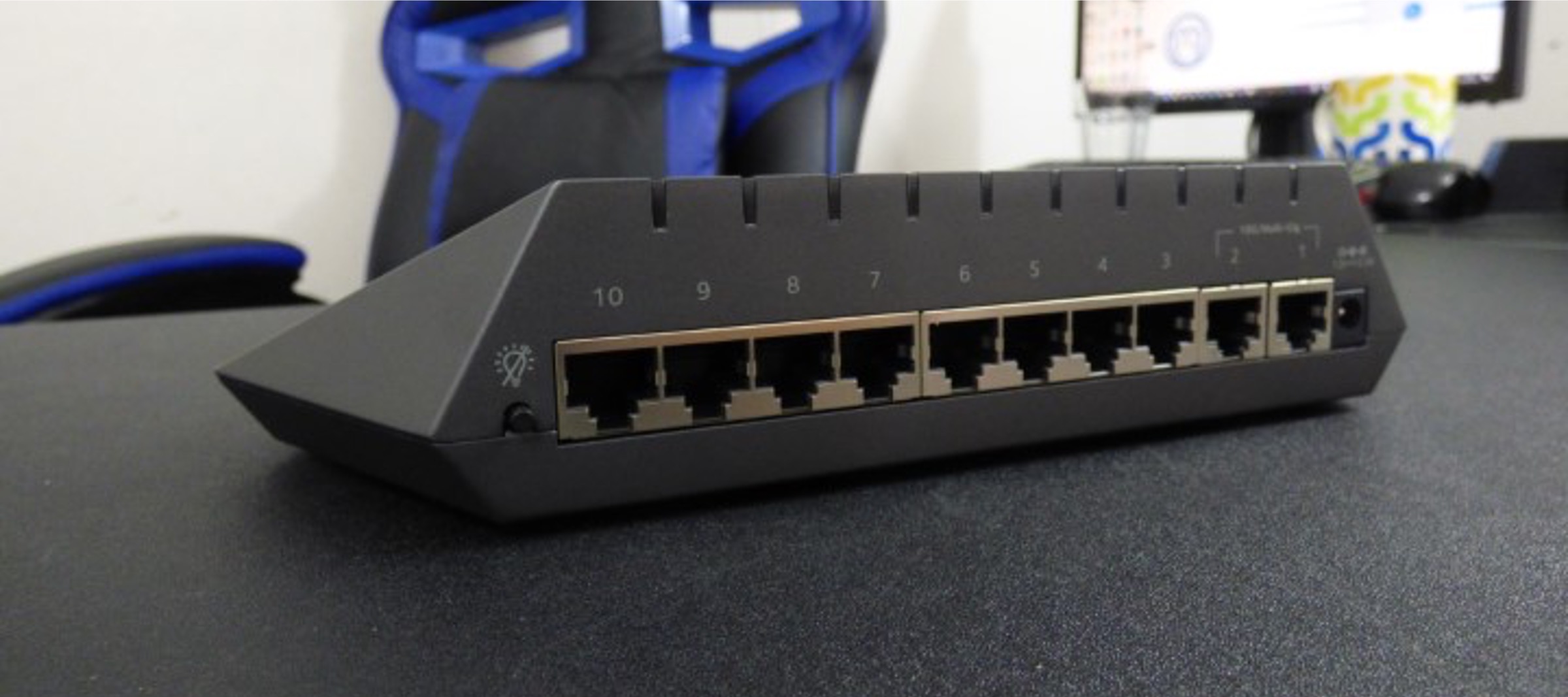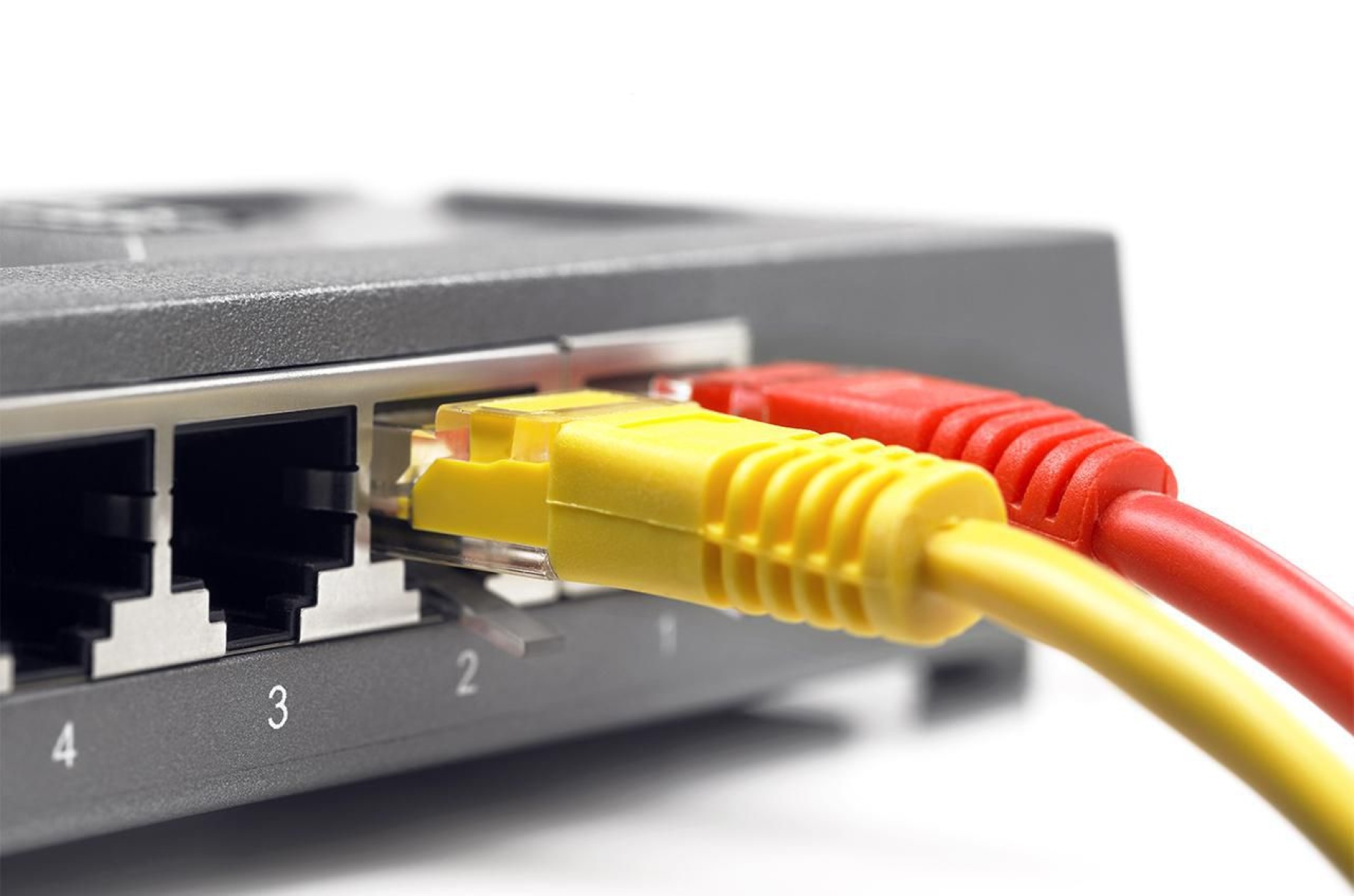Introduction
In the realm of networking, the terms "network switch" and "router" are frequently bandied about, often causing confusion among those who are not well-versed in the intricacies of networking technology. Understanding the distinction between these two devices is crucial for anyone navigating the complex landscape of computer networks. While both devices play pivotal roles in directing data traffic, they serve distinct functions and are employed in different network scenarios.
This article aims to demystify the concepts of network switches and routers, shedding light on their individual functionalities, operational mechanisms, and the specific contexts in which they are most effectively utilized. By the end of this exploration, you will have a clear understanding of the roles these devices play in network infrastructure and be equipped with the knowledge to discern when to deploy a network switch and when to opt for a router.
Let's delve into the intricate world of networking to unravel the distinct features and applications of network switches and routers. Understanding these fundamental components will empower you to make informed decisions when designing, expanding, or troubleshooting computer networks.
What Is a Network Switch?
A network switch is a fundamental networking device that operates at the data link layer of the OSI model. It functions as a central connection point for various devices within a local area network (LAN), enabling the seamless transmission of data packets between these devices. Unlike hubs, which indiscriminately broadcast data to all connected devices, a network switch intelligently forwards data only to the intended recipient based on the Media Access Control (MAC) address.
Network switches come in various configurations, including unmanaged, managed, and fully managed switches. Unmanaged switches are typically plug-and-play devices that require minimal configuration, making them suitable for small-scale deployments. In contrast, managed switches offer advanced features such as VLAN support, Quality of Service (QoS) prioritization, and port mirroring, providing greater control and flexibility in network management. Fully managed switches extend these capabilities further, often incorporating features like Layer 3 routing and extensive security protocols.
These devices are equipped with multiple ports, allowing numerous devices to be interconnected within a LAN. Each port functions as an independent communication channel, facilitating simultaneous data transmission between connected devices. Network switches are pivotal in optimizing network performance by minimizing data collisions and congestion, thereby enhancing the overall efficiency and speed of data transfer within the network.
How Does a Network Switch Work?
A network switch operates by utilizing MAC addresses to efficiently direct data traffic within a network. When a device connected to a switch sends data to another device within the same network, the switch examines the destination MAC address of the incoming data packet. By referencing its internal MAC address table, the switch identifies the port associated with the destination MAC address and forwards the data packet exclusively to that port, effectively preventing unnecessary data transmission to other connected devices.
Furthermore, network switches support full-duplex communication, allowing data to be transmitted and received simultaneously on each port. This feature significantly enhances network throughput and minimizes latency, making switches ideal for environments where high data transfer speeds are essential.
Managed switches offer additional functionality through features like VLANs, which enable the segmentation of a single physical network into multiple virtual networks, thereby enhancing security and network performance. Quality of Service (QoS) capabilities allow for the prioritization of specific types of data traffic, ensuring that critical applications receive the necessary bandwidth and network resources to operate optimally.
Layer 3 switches, often referred to as multilayer switches, possess routing capabilities, enabling them to make forwarding decisions based on IP addresses in addition to MAC addresses. This functionality blurs the line between switches and routers, providing enhanced flexibility in network design and optimization.
In essence, a network switch functions as a pivotal intermediary device within a local network, efficiently managing data traffic and facilitating seamless communication between connected devices.
What Is a Router?
A router is a critical networking device that operates at the network layer of the OSI model, facilitating the interconnection of multiple networks. Unlike a network switch, which primarily manages traffic within a single network, a router is designed to intelligently forward data packets between different networks, effectively serving as a gateway for inter-network communication.
Routers are integral to the functioning of wide area networks (WANs) and the internet, as they are responsible for directing data between disparate networks, ensuring that information reaches its intended destination across various interconnected networks. They achieve this by analyzing the destination IP address of incoming data packets and determining the most efficient path for forwarding the data to its destination.
Modern routers are equipped with a variety of interfaces, including Ethernet ports, wireless interfaces, and wide-area network interfaces such as DSL, cable, or fiber connections. This versatility allows routers to seamlessly connect diverse network types, accommodating the complex networking requirements of modern digital infrastructures.
How Does a Router Work?
A router functions as a traffic manager for data traveling between different networks, employing a combination of routing protocols and algorithms to determine the most efficient path for data transmission. When a data packet arrives at a router, the device inspects the destination IP address and consults its routing table to identify the optimal path for forwarding the packet. This process may involve evaluating factors such as network congestion, available bandwidth, and the reliability of potential routes.
Routers play a pivotal role in ensuring the secure and efficient flow of data across diverse networks, including the internet. They employ Network Address Translation (NAT) to map private IP addresses within a local network to a single public IP address, thereby enabling multiple devices within the local network to share a common public IP address when communicating with external networks. This feature enhances network security and conserves public IP addresses, a finite resource in the context of IPv4 addressing.
Furthermore, routers are equipped with firewall capabilities, allowing them to filter incoming and outgoing data packets based on predefined security rules. This functionality is crucial for safeguarding networks against unauthorized access and malicious activities, bolstering the overall security posture of interconnected networks.
In addition to their role in data forwarding, routers often integrate wireless access points, enabling them to provide Wi-Fi connectivity to devices within a local network. This convergence of routing and wireless capabilities empowers routers to serve as central hubs for both wired and wireless network connectivity, catering to the diverse connectivity needs of modern digital environments.
Key Differences Between a Network Switch and a Router
Understanding the distinctions between a network switch and a router is essential for effectively designing and managing computer networks. While both devices are critical components of network infrastructure, they serve distinct functions and exhibit fundamental differences in their operational characteristics.
- Function: A network switch operates at the data link layer of the OSI model, facilitating the efficient transmission of data within a single network. In contrast, a router functions at the network layer, directing data between disparate networks and serving as a gateway for inter-network communication.
- Data Transmission: Network switches primarily manage traffic within a local area network (LAN), forwarding data packets based on MAC addresses. Routers, on the other hand, analyze IP addresses to determine the most efficient paths for forwarding data between different networks, including WANs and the internet.
- Network Segmentation: While network switches facilitate network segmentation through the use of virtual LANs (VLANs), routers play a key role in defining and enforcing network boundaries, enabling the creation of distinct subnets and managing traffic between them.
- Security Features: Routers typically incorporate firewall capabilities and support Network Address Translation (NAT) to enhance network security and manage the flow of data between private and public networks. Network switches, while essential for optimizing data transfer within a LAN, do not offer the same level of security and boundary enforcement as routers.
- Interconnectivity: Routers are designed to interconnect multiple networks, enabling seamless communication across diverse network infrastructures. Network switches, on the other hand, focus on facilitating communication within a single network, optimizing data transmission between connected devices.
By comprehending these fundamental disparities, network administrators and IT professionals can make informed decisions regarding the deployment and configuration of network switches and routers, ensuring the efficient and secure operation of computer networks.
When to Use a Network Switch
Network switches are indispensable in scenarios where the seamless and efficient communication between devices within a local network is paramount. Here are key instances where the deployment of network switches is essential:
- Local Area Networks (LANs): Network switches are the cornerstone of LAN connectivity, providing the essential infrastructure for interconnecting computers, printers, servers, and other devices within a confined geographical area such as an office, campus, or home network.
- High-Performance Data Transfer: In environments where high-speed data transfer and minimal latency are crucial, such as data centers and multimedia production facilities, the use of network switches ensures optimized data transmission, minimizing data collisions and enhancing network performance.
- Network Expansion: When expanding an existing network to accommodate additional devices, network switches enable seamless integration of new devices without compromising network efficiency or introducing network congestion.
- Virtual LANs (VLANs): For network segmentation and enhanced security, the use of managed switches with VLAN support allows for the isolation of network traffic, creating logical networks within a single physical infrastructure.
- Converged Networks: In modern network environments where voice, data, and video traffic are consolidated over a single network infrastructure, network switches with Quality of Service (QoS) capabilities ensure the prioritization of critical data streams, maintaining optimal performance for diverse applications.
By leveraging network switches in these scenarios, organizations and network administrators can establish robust and efficient local network infrastructures, facilitating seamless communication and data transfer while accommodating the evolving demands of modern digital environments.
When to Use a Router
Routers play a pivotal role in interconnecting multiple networks and facilitating the secure and efficient transfer of data between disparate network infrastructures. Here are key scenarios where the deployment of routers is essential:
- Wide Area Networks (WANs): Routers are indispensable for connecting local networks to external networks, such as the internet or private wide area networks. They enable the seamless transmission of data between geographically dispersed locations, ensuring connectivity and communication across diverse network environments.
- Network Boundary Enforcement: In environments where network segmentation and boundary enforcement are critical, routers define and manage the flow of data between distinct subnets, enhancing network security and optimizing traffic management.
- Internet Connectivity: For organizations and individuals requiring internet access, routers serve as the gateway for connecting to internet service providers, managing the flow of data between local networks and the global internet infrastructure.
- Wireless Network Deployment: Routers with integrated wireless access points are essential for providing Wi-Fi connectivity to devices within a local network, catering to the pervasive demand for wireless connectivity in modern digital environments.
- Network Security and Management: Routers incorporate firewall capabilities, network address translation (NAT), and virtual private network (VPN) support, bolstering network security and enabling secure remote access to network resources.
By leveraging routers in these scenarios, organizations, service providers, and network administrators can establish robust and secure network infrastructures, enabling seamless communication, internet connectivity, and the efficient management of data traffic across diverse network environments.
Conclusion
Network switches and routers are foundational components of modern networking infrastructure, each playing a distinct yet complementary role in facilitating seamless communication and data transfer within and between networks. Understanding the unique functionalities and applications of these devices is essential for effectively designing, expanding, and managing computer networks.
Network switches, operating at the data link layer, optimize data transfer within local networks, providing high-speed connectivity and efficient traffic management. Their ability to facilitate network segmentation, prioritize data traffic, and accommodate the diverse connectivity needs of modern digital environments makes them indispensable for local area networks, high-performance data transfer, network expansion, virtual LANs, and converged networks.
Routers, functioning at the network layer, serve as gateways for interconnecting multiple networks, enabling secure and efficient data transmission between disparate network infrastructures. Their pivotal role in connecting wide area networks, enforcing network boundaries, providing internet connectivity, deploying wireless networks, and enhancing network security underscores their significance in modern networking environments.
By recognizing the distinct contexts in which network switches and routers are most effectively utilized, organizations, IT professionals, and network administrators can make informed decisions regarding the deployment and configuration of these devices, ensuring the seamless operation and optimization of computer networks in diverse and dynamic environments.
In conclusion, the synergy between network switches and routers forms the backbone of modern networking, enabling the interconnectedness and efficient communication that underpin the digital landscape.

























